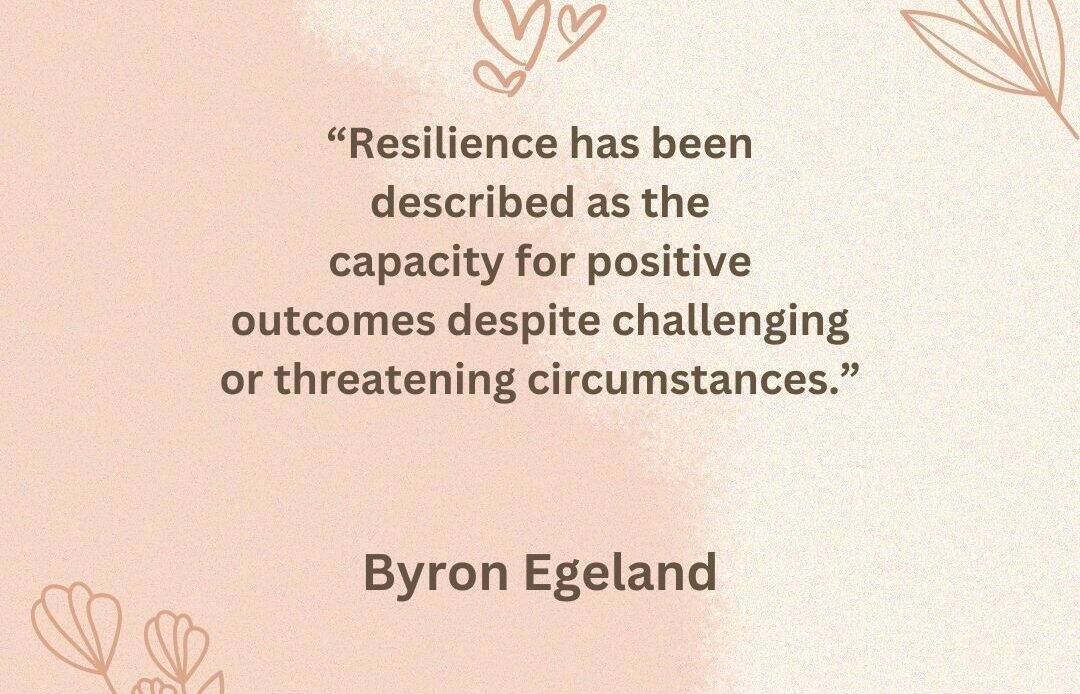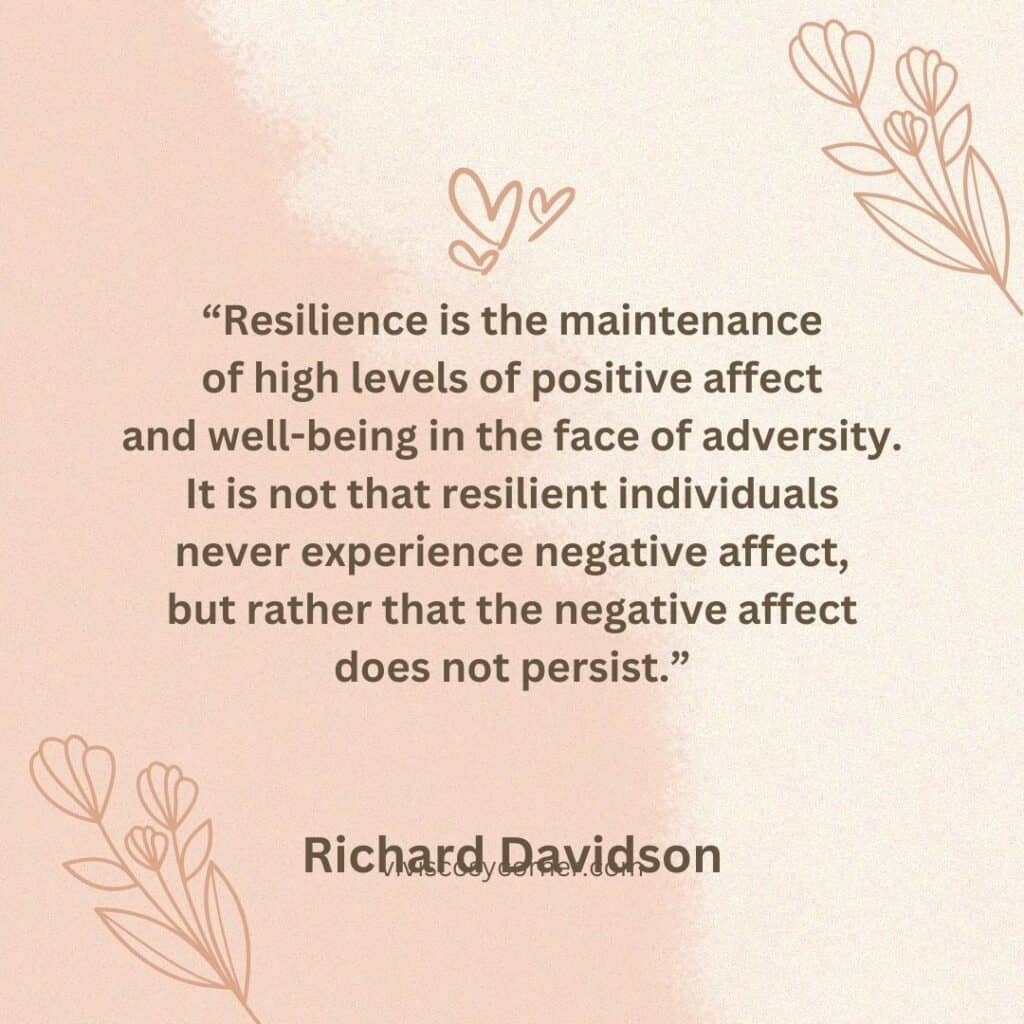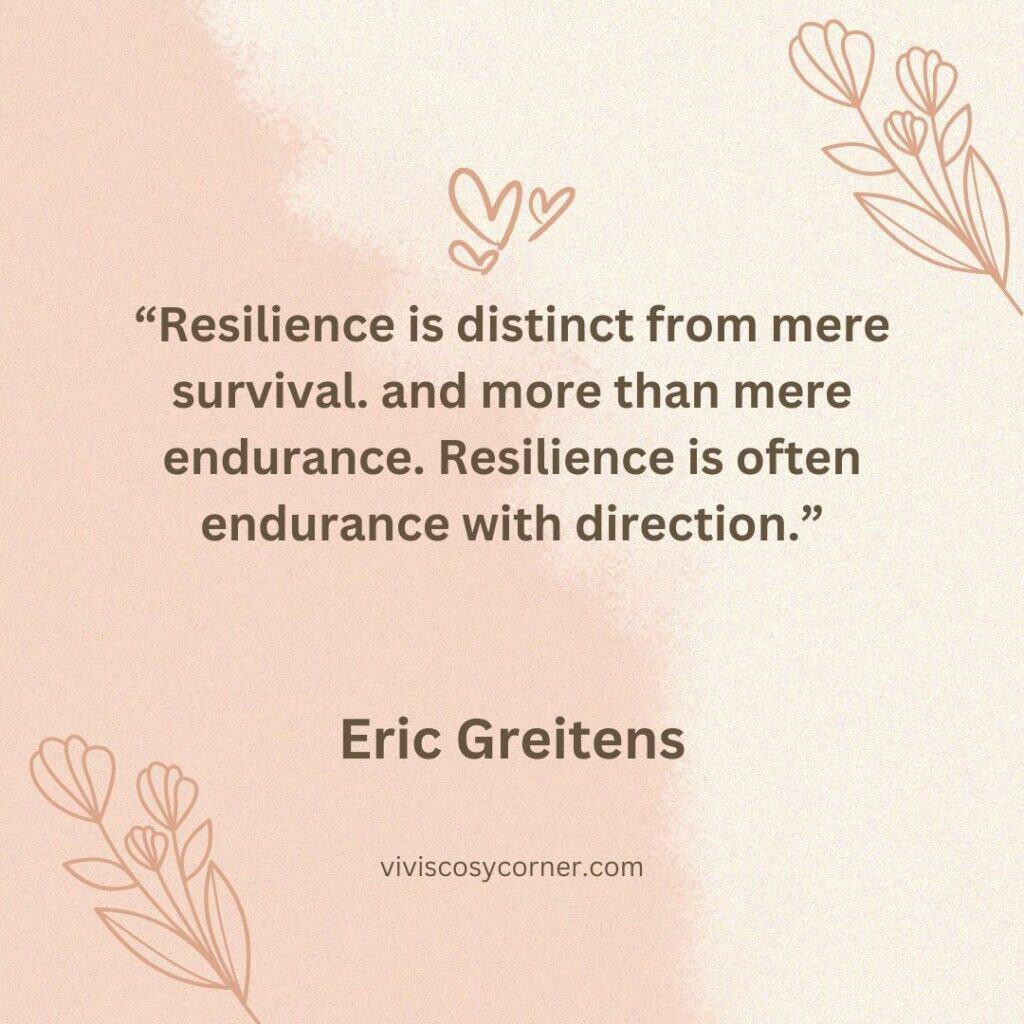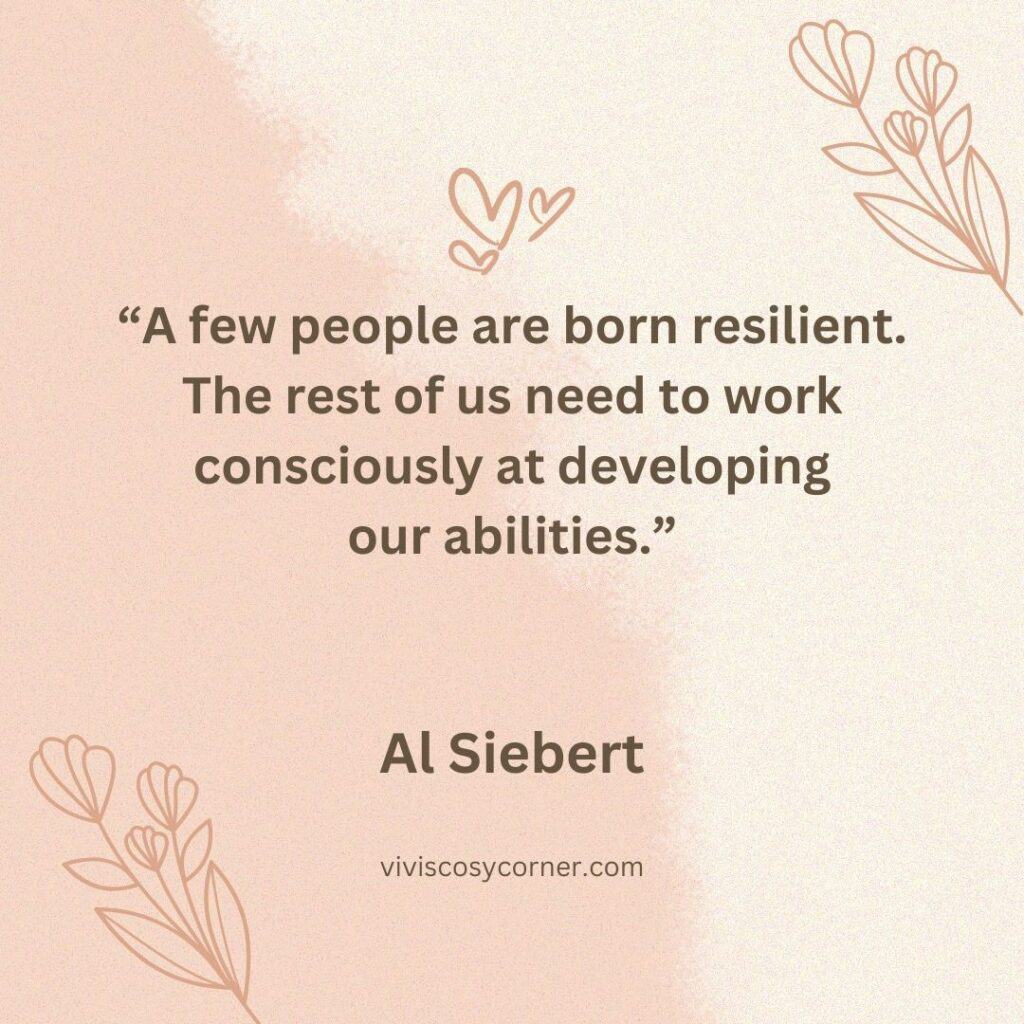
How does one embrace resilience and thrive in the face of adversity?
Can you remember the day and time an adverse and distressing life event or trauma occurred?
It could have been a redundancy, a bereavement, or a health issue.
Life suddenly became uncertain and panic subsequently set in as your world pulverized and torpedoed.
Deafening Boom!
What did you feel?
Shock. Denial. Anger. Fear. Grief. Guilt… the whole gamut of negative emotions racing for precedence kept you constantly drained.
Yes… that’s life. Unexpected. Unforeseen. Unanticipated.
Life as we know it is an unpredictable journey.
Life is filled with twists and turns that often lead us down unexpected paths.
Along the way, we encounter abrupt and heartbreaking challenges and setbacks that test our strength and resilience.
In these moments of adversity, uncertainty, and unimaginable pain, the ability to bounce back becomes a crucial skill, and that’s where resilience comes into play.
Let me explain further…
These sorts of experiences are the ones that help you build resilience.
Wait… What?
Yes, you will need to work through the negative emotions and uncomfortable stress to thrive subsequently.

Understanding Resilience – How Do You Adapt to Crises?
In an increasingly VUCA (volatile, uncertain, complex, and ambiguous) world, there are constant ongoing crises. You cannot evade it. What would you need to do?
- You would need to aim to have a personal understanding and an awareness of the crises at work and home by asking yourself “What does this crisis mean for me?”
- You could also try to recognize the patterns in others and observe the different ways they have responded to crises in the past. (Ask yourself, how have people around you responded to crises?)
- You could also observe the emotions both within yourself and others. They tend to range from shock – denial – anger – depression – acceptance & experimentation – decisions – integration (the process moves along the Resilience Curve)
- You will need to understand that different people deal differently with crises. This will enable you to develop empathy – experiencing the feelings of another person and sympathy – understanding and recognizing the suffering of another person.
Resilience is more than just bouncing back from difficult situations; it’s about adapting, growing, and thriving despite the obstacles in our way. Resilient individuals don’t avoid stress and hardship; instead, they face them head-on, using adversity as a catalyst for personal growth.

Related posts:
- Resilience Isn’t Just Grit: Building Sustainable Strength Beyond Willpower
- 90 Best Resilience Quotes To Inspire and Motivate You
- Beyond the Obvious: Resilience in Nature and Dance
- 20 Valuable Lessons in Resilience from the London Marathon
- Unleash Your Inner Strength: How to Cultivate a Resilient Mind
Mastering the Art of Bouncing Back – What Do You Need in Your Resilience Toolkit?
The Power of a Positive Mindset
At the core of resilience is a positive mindset. Embracing a positive outlook doesn’t mean ignoring challenges or pretending they don’t exist; rather, it involves reframing your perspective. When faced with adversity, resilient individuals focus on what they can control and seek solutions, rather than dwelling on the problems.
Having Meaning and Purpose in Your Life
It should come as no surprise that people who find great meaning in their lives or who feel they have a purpose in life are more likely to bounce back from setbacks or disappointments; if you sincerely believe you have a purpose in life, you are less likely to give up in the face of tragedy or loss.
Emotional Intelligence
Emotional intelligence is another key component of resilience. Understanding and managing your emotions helps you navigate tough situations with clarity and composure. It’s about acknowledging your feelings, but not letting them dictate your actions. Developing emotional intelligence allows you to maintain a sense of balance, even when the world around you appears chaotic.
Cultivating and Maintaining Authentic Supportive Connections
No one thrives in isolation. Building a network of supportive relationships provides a safety net during challenging times. Building stronger connections with others can be a key component of resilience. Whether it’s friends, family, or colleagues, having a support system helps distribute the weight of adversity.
Shared experiences and collective problem-solving make the journey through tough times more manageable. A strong network can help you grow as a person and keep things in perspective when things go wrong. They can support you in being reminded of the significance and purpose of your life.
These connections may be cultivated from numerous parts of your life where you have repeated interactions. This could be through volunteer work, civic or religious communities, book or dinner clubs, school communities, work groups, etc.
Having a Sense of Humour
Laughing at the circumstances and yourself helps you to take the sting out of the difficult circumstances. This healthy sense of humor is an antidote to the stresses of life.
Learning and Growth – Strengthening Your Curiosity
Resilience is a skill that can be developed and reinforced over time. Each challenge you face is an opportunity for learning and growth. Your viewpoint is expanded by curiosity. It enables you to view stress as a motivating factor rather than a crippling one.
Instead of viewing setbacks as failures, see them as stepping stones toward a stronger, more resilient version of yourself. Embrace the lessons adversity brings and use them to propel yourself forward.
Not only that. You will need to practice some resilience behaviors to cultivate the skill…

12 Practical Resilience Behaviours
- Having a Positive Outlook: Resilient individuals tend to maintain a positive attitude, even in the face of adversity. You focus on what is within your control – ideally your circle of influence. This way, you let go of things outside of your control.
- Practicing Self-Care: Self-care is not a sign of weakness. You are valued by your family, coworkers, and community. You should take care of your physical, spiritual, and mental well-being through activities that rejuvenate and energize you.
- Setting Realistic Goals and Pacing Yourself: You should break down larger goals into smaller, more manageable tasks. Be reasonable about what is possible. Celebrate small victories along the way.
- Maintaining Perspective: Remember that adversity is temporary. You should keep the bigger picture in mind and focus on the possibilities beyond the current challenges.
- Adaptability: Resilient people are adaptable and flexible. Developing the ability to adapt positively to changing circumstances is necessary. Flexibility is a key trait of resilient individuals.
- Emotional Regulation: Resilience is closely tied to emotional regulation. Resilient individuals can manage and regulate their emotions effectively. This allows them to respond to stressors with composure and maintain a balanced emotional state.

7. Empathy: is an intellectual skill that is challenging to learn. You will need to understand another person’s presumptions, experiences, and logic. In essence, you are charged to see and understand the world from another person’s perspective.
8. Self-Compassion: Resilient individuals practice self-compassion. They are kind to themselves in the face of setbacks, recognizing that everyone encounters difficulties. This kindness helps them bounce back from failures with greater strength.
9. Patience: Patience is a key element of resilience. Cultivating patience in the face of challenges allows you to endure difficulties and work towards positive outcomes.
10. Tolerance for Ambiguity and Uncertainty: Involves accepting and respecting diverse perspectives and experiences. Tolerance fosters understanding and empathy as it allows you to embrace change without being overly resistant. This helps you foster a mindset that sees differences as opportunities for growth, enhancing personal development. It contributes to conflict resolution and prevention. Tolerance plays a key role in maintaining constructive relationships, reducing stress, and promoting mental well-being.
11. Developing Better Networks: Participating in extracurricular activities such as board work, social action, and community organizing groups can aid in the development of resilience in your professional life. We can learn different approaches to leading, managing, and handling crises as well as different relationship skills like bargaining with different stakeholders by being exposed to a broad set of people.
Extending your network facilitates the development of dimensionality in your life. Networking enables a multitude of relationships and connections that support your development. This dimensionality then proceeds to give you a different perspective on your challenges and helps you gain a more pronounced sense of purpose.
12. Seeking Professional Help: A lack of resilience impacts your psychological well-being. You should not hesitate to seek help and guidance from mental health professionals or coaches if needed. They can provide valuable insights and support.

Harnessing the Power of Resilience
Embracing resilience is not about avoiding difficulties but about facing them with courage and determination. By cultivating a positive mindset, building emotional intelligence, fostering supportive connections, and embracing opportunities for learning and growth, you can thrive in the face of adversity.
Resilience is a journey, not a destination. So, strap in, navigate the twists and turns, and emerge stronger on the other side. You’ve got this!
What steps are you taking to develop resilience in your life? How are you building a supportive network of connections?
Let me know in the comments box below.
Thank you for being a VCC reader.

